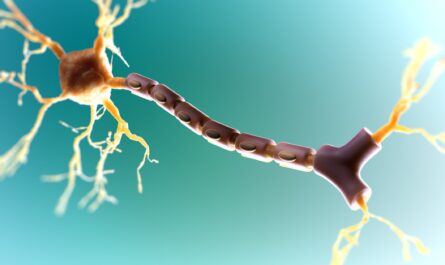A loss of appetite can be attributed to various factors such as satiety, nausea, or anxiety. It is the body’s natural defense mechanism to delay eating in times of distress to prevent further damage and allow time for regeneration. Researchers at the Max Planck Institute for Biological Intelligence have recently made a significant discovery by identifying a specific brain circuit responsible for suppressing appetite in mice when they experience nausea. The results of their study have been published in the journal Cell Reports.
The key players in this appetite control mechanism are the special nerve cells located in the amygdala, a region of the brain associated with high emotional states. These cells are activated during periods of nausea and send signals that suppress appetite. This research sheds light on the intricate regulation of eating behavior, highlighting that the mechanisms behind appetite loss during nausea differ from those during satiety.
Whether it’s the stress of an upcoming exam, motion sickness during a boat trip, or exposure to germs at a day-care center, these situations can often lead to stomach discomfort. It is a common phenomenon to lose one’s appetite in such circumstances as a means of self-preservation. The brain plays a crucial role in orchestrating this response, serving as the control center for energy balance and eating behavior.
Investigating how the brain inhibits eating during bouts of nausea, researchers at the Max Planck Institute focused on the amygdala’s role in regulating emotions, including those related to food consumption. They discovered a new group of cells in the amygdala that actively suppresses appetite when triggered by feelings of nausea. The activation of these cells prompts even hungry mice to stop eating, underscoring their impact on appetite regulation.
Further exploration of this particular cell type revealed insights into the underlying circuitry governing appetite suppression. When a mouse experiences nausea, the amygdala is activated, leading to the stimulation of these specialized cells that send inhibitory signals to other brain regions, including the parabrachial nucleus in the brain stem, which processes internal bodily state information.
This newly identified cell type operates differently from previously known cells in the amygdala and interacts with distinct brain areas to influence appetite. It is evident that the brain employs separate cells and circuits to manage appetite loss under different conditions, emphasizing the complexity of this regulatory process.
By unraveling the mechanisms through which the brain, particularly the amygdala, modulates eating behavior, this study lays the groundwork for a deeper understanding of eating disorders and related conditions in humans. The findings offer a valuable perspective on the intricate interplay between the brain and appetite regulation, opening doors to potential therapeutic interventions for disorders characterized by dysregulated eating behaviors.
Note:
1. Source: Coherent Market Insights, Public sources, Desk research
2. We have leveraged AI tools to mine information and compile it



